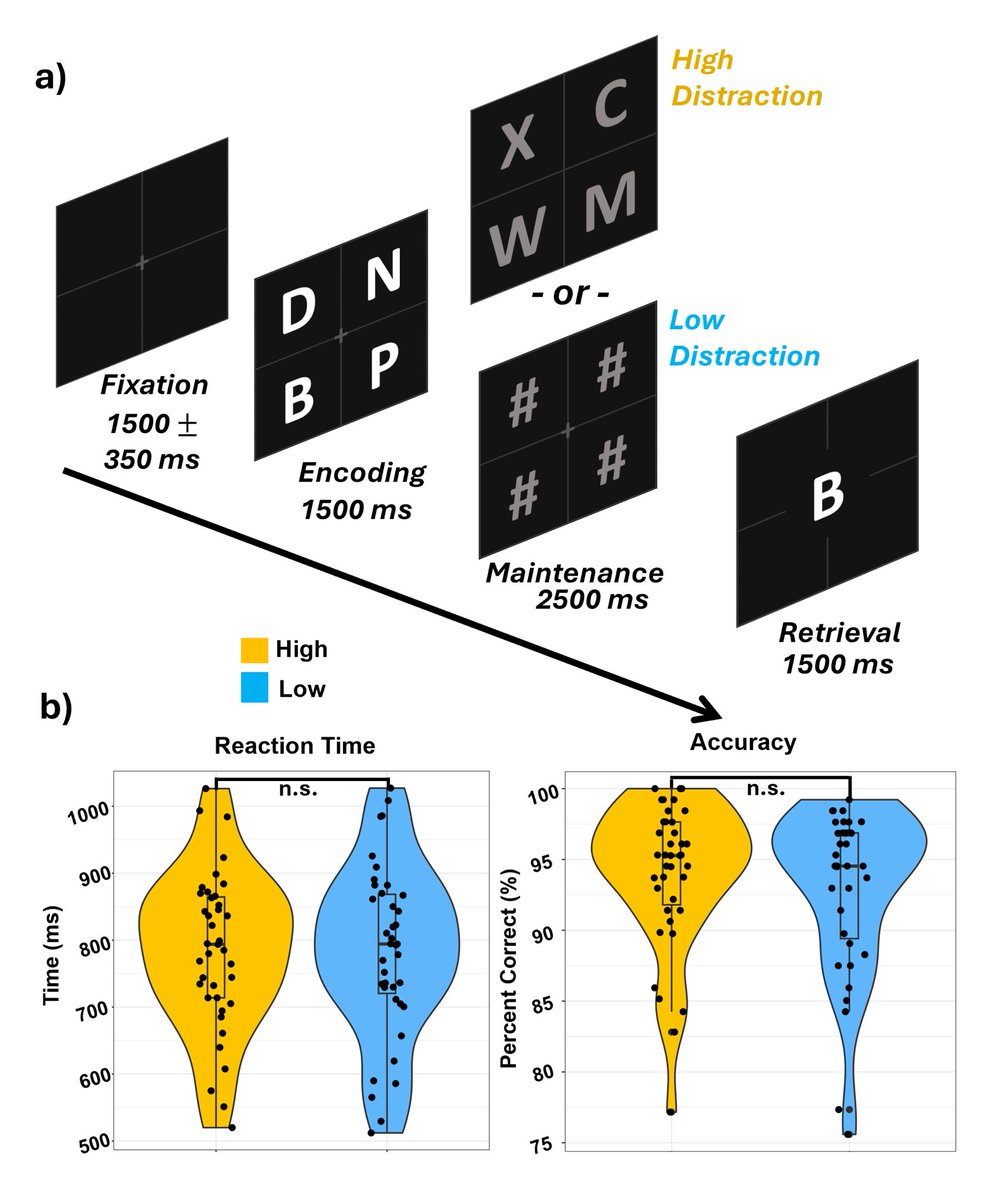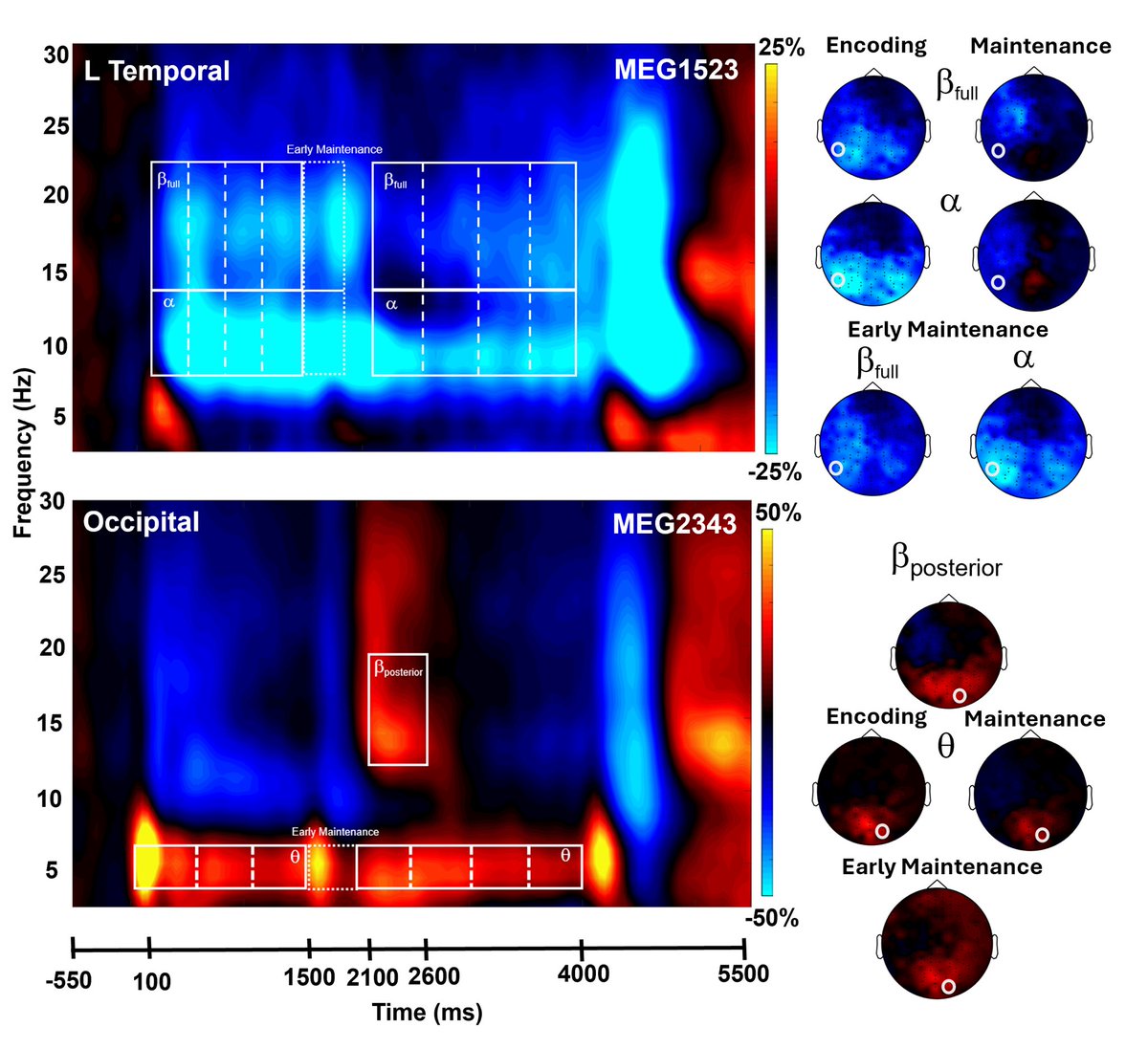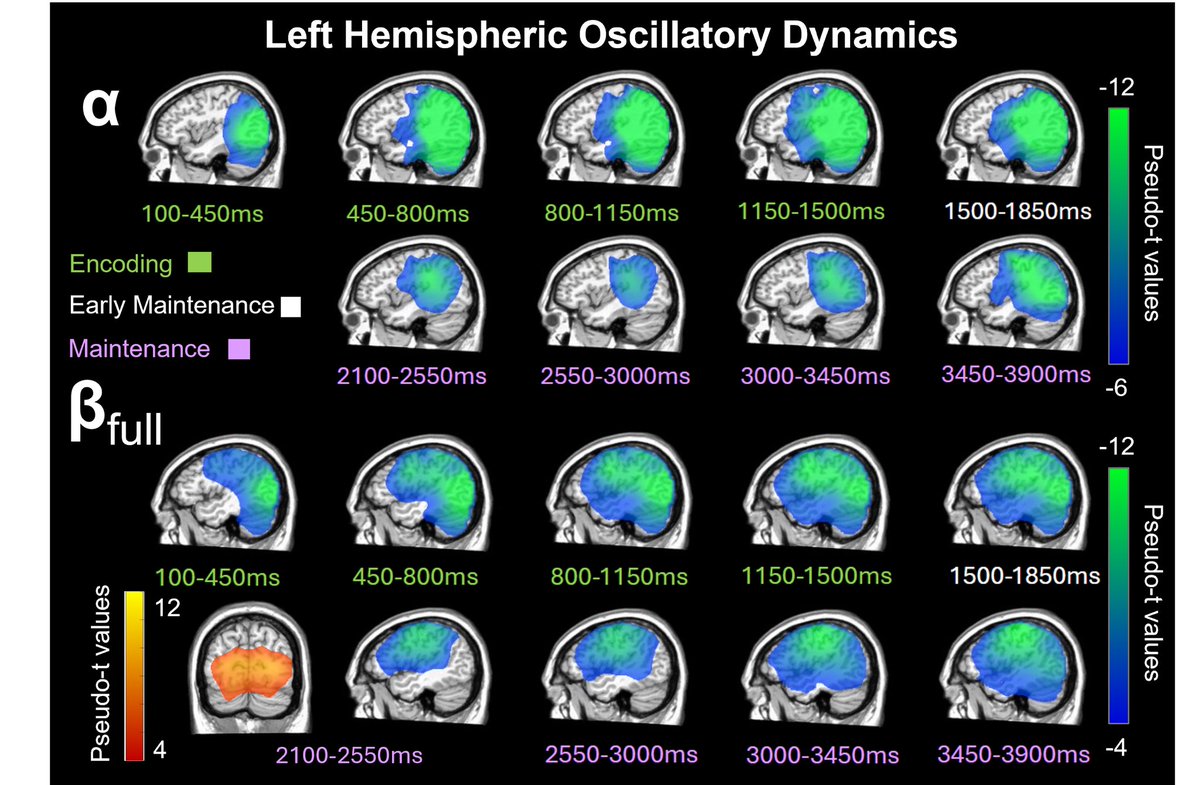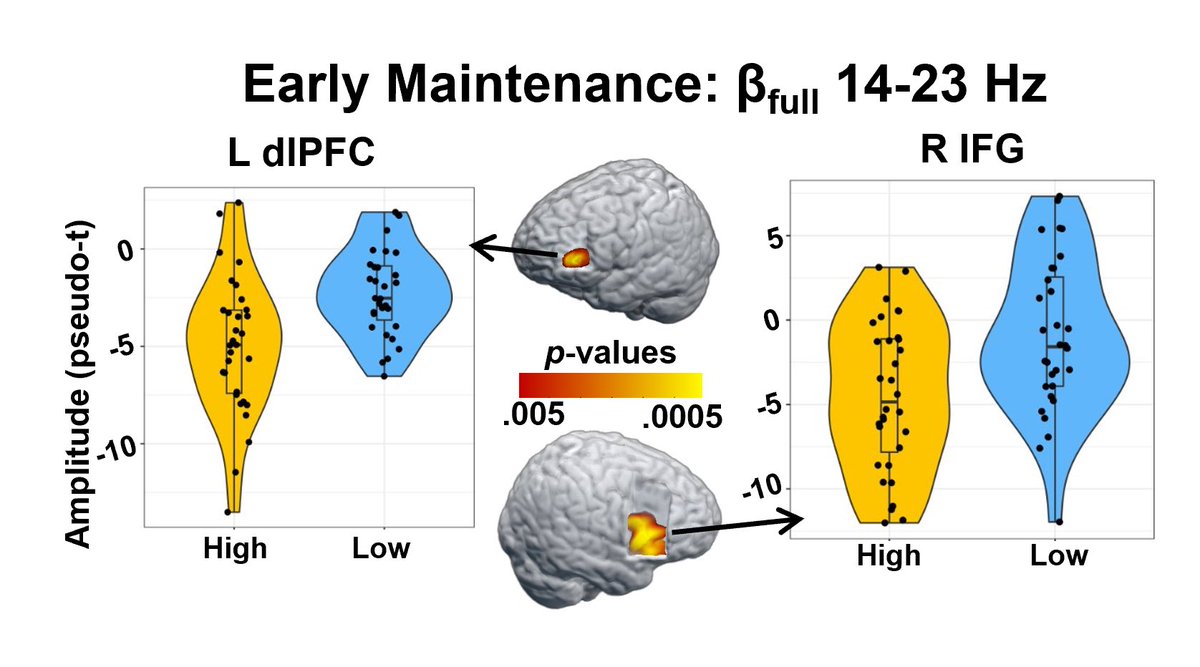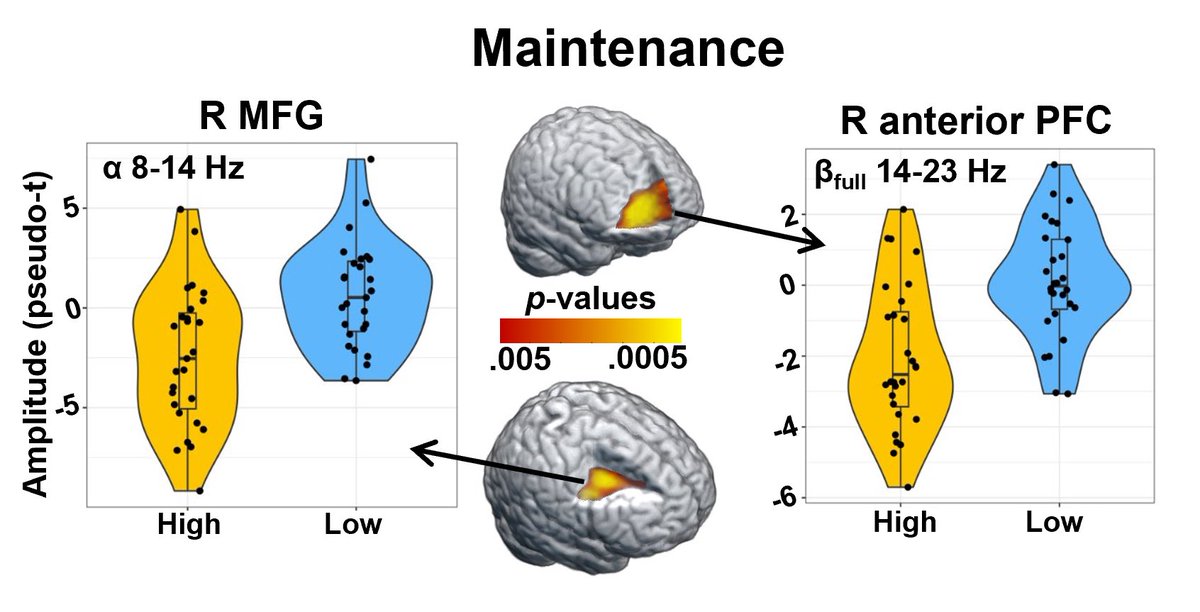I’m excited to announce our recently accepted publication in Neuroimage focused on working memory! Thread 🧵 1/ sciencedirect.com/science/articl…
We used magnetoencephalography (MEG) to examine brain activity in 46 healthy adults. For a brief explainer on MEG, check out this blog post I wrote with @KnowingNeurons knowingneurons.com/blog/2024/09/2… 2/
Participants completed viewed a grid of 4 letters, then either a second grid of 4 letters or 4 # signs. They then saw a single letter and indicated if this was in the first grid or not. The idea was that viewing letters (vs #) would be harder (high- versus low-distraction). 3/
While we didn’t see any behavioral differences, there was cool neural activity in the occipital lobe in the alpha and beta frequencies 4/
We saw that, over time, this activity moved from the occipital towards the left parietal, and this was a decrease from baseline (with a brief increase in occipital beta activity) 5/
When we looked at the difference in conditions between low- and high-distraction, we saw increased activity in the frontal lobe during our high-distraction condition in both alpha and beta during maintenance 6/
Aside from maintaining memory of that first grid, this is also when the distractor appears. Frontal regions are known to be involved in inhibitory control, so we think that what we’re seeing is more functional inhibition than maintenance alone. 7/
Why does that matter? Well, when we’re navigating the real world, we have to remember things despite inevitable distractions. This helps us understand how our brain does that. 8/
Thank you to @maggie_rempe @DiconLab @BoysTown_IHN and Dr. Tony Wilson amongst other coauthors, for all of their help on this! 9/

